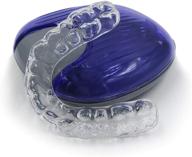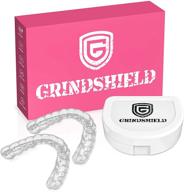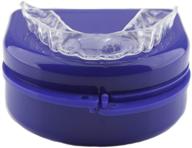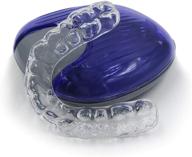How to stop teeth grinding at night?
Teeth grinding, also known as bruxism, is a common condition that affects nearly 10% of adults. It typically happens during sleep, so many people are unaware they grind their teeth. Stopping teeth grinding can help prevent tooth damage, jaw pain, headaches, and other complications.
Use a custom night guard
Wearing a custom night guard made by your dentist is one of the most effective ways to stop teeth grinding at night. Night guards fit over your teeth like a mouthguard and prevent your top and bottom teeth from grinding together. They are made from soft plastic and molded specifically for your teeth.
- Helps relax jaw muscles
- Absorbs force from grinding/clenching
- Allows you to sleep better
Reduce stress
High stress and anxiety can trigger teeth grinding at night. Try relaxation techniques before bed like meditation, deep breathing, gentle yoga, or listening to calming music. Massage and warm baths can also help relieve tension.
Avoid triggers
Certain foods, drinks, and medications can make bruxism worse. Avoid caffeine, alcohol, and nicotine close to bedtime. Check with your doctor about potential side effects of any medications you take.
With some simple lifestyle changes and use of a custom night guard, you can successfully stop teeth grinding during sleep. Consult your dentist for fitting and recommendations. Consistent use will train your jaw muscles to relax at night.
How to help teeth grinding pain?
If you wake up with jaw pain, headaches, and sore teeth, you may be grinding your teeth at night. Teeth grinding can strain the muscles in your jaw, cause damage to teeth, and make it painful to chew. Luckily, there are several ways to get relief from bruxism pain.
Use a mouth guard
Wearing a mouth guard designed for teeth grinding can help relieve pain by absorbing some of the forces from clenching and grinding. This prevents your upper and lower teeth from wearing down against each other while you sleep.
- Custom-fit guards made by a dentist work best
- Boil and bite guards that you mold yourself are affordable over-the-counter options
Try pain relief methods
To alleviate jaw soreness and tension pain, use hot or cold therapy. Apply an ice pack wrapped in a towel to the outside of your jaw for 15 minutes to reduce inflammation. Use a heated towel or warm compress to promote blood flow and relax muscles.
Gentle massages along the jaw, temples, and neck can also relax muscles. Over-the-counter pain medication like ibuprofen can temporarily relieve pain as well.
Correct your sleeping position
Sleeping in a position that strains the jaw can make pain worse. Try sleeping on your back using a slim pillow that keeps your head and neck aligned. Avoid sleeping on your stomach or side.
Making adjustments to relieve jaw tension, wearing a mouth guard, and using pain relief techniques can help manage teeth grinding discomfort. See your dentist for fitting of a custom night guard for the most effective pain relief.
How to fit mouth guard for teeth grinding?
Wearing a mouth guard designed for teeth grinding, also called a night guard, can protect your teeth from damage caused by bruxism. For the best protection and comfort, it's important to fit your mouth guard properly.
Custom-fit guards
Getting a custom mouth guard made by your dentist ensures the best fit. Your dentist will take impressions of your teeth and have a guard fabricated from those models. Custom guards are more comfortable and durable than over-the-counter versions.
- Made from soft plastic material molded to your teeth
- Enables you to talk and drink while wearing
- Can last several years with proper care
Boil and bite guards
Boil and bite mouth guards allow you to custom mold the plastic yourself at home. To fit:
- Immerse guard in hot water to soften
- Allow to cool briefly so not too hot
- Place guard over teeth and bite down firmly
- Suck out air and water while biting
- Mold and shape guard around teeth
Test the fitted guard to ensure you can open and close your mouth fully without obstruction. Trim any excess plastic with scissors if needed.
Be sure to follow the manufacturer's instructions. Replace boil and bite guards every 6-12 months or as they show signs of wearing down.
How to clean mouth guard for teeth grinding?
Cleaning your teeth grinding mouth guard regularly is important to keep it hygienic and prevent bacterial growth. Follow these steps to properly clean your night guard or bruxism mouthpiece.
Rinse after each use
After removing your mouth guard in the morning, give it a thorough rinse under cool running water before storage. This will wash away saliva and debris.
Brush with toothpaste
- Use a soft-bristled toothbrush and toothpaste to gently brush all surfaces of the guard.
- Avoid vigorous scrubbing which can damage the plastic.
- Rinse thoroughly with water until paste is removed.
Soak in denture cleaner
Soak the mouth guard in an over-the-counter denture cleaning solution for 15-20 minutes to sanitize.
- Use cool water rather than hot to avoid warping.
- Rinse after soaking before wearing or storing.
Occasionally use bleach
About once a week, soak the guard for 2-3 minutes in a dilute bleach solution of 2 teaspoons bleach per cup of cool water. Rinse thoroughly.
With proper daily and weekly cleaning, you can keep your night guard fresh and prevent harmful bacteria buildup. Replace it every 6-12 months or sooner if it becomes worn.
How To Mold The Confidental Mouth Guards For A Perfect Fit?
To mold The ConfiDental mouth guards for a perfect fit, follow these steps:
- Test the fit of the mouth guard by placing it in your mouth. If it is too big or uncomfortable, trim it with sharp scissors until it fits.
- Bring a pot of water to boil and submerge the mouth guard for about 30 seconds.
- Remove the mouth guard from the water and let it cool for about 20 seconds.
- Place the mouth guard in your mouth and use your fingers to press it against your teeth and gums.
- Use a sucking or swallowing motion to draw out any water between your teeth and the mouth guard to tighten it.
- Hold the mouth guard in place for about 30 seconds until it cools and hardens.
- Check the fit and adjust if necessary.
Top products in 😬 Teeth Grinding Guards
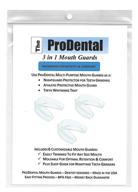

9 Review

What Are Some Common Issues People Face When Molding The Confidental Mouth Guards?
Here are some common issues people face when molding The ConfiDental mouth guards:
- The mouth guard may be too loose or too tight.
- The instructions on how to mold the mouth guard may be vague.
- The mouth guard may not fit comfortably.
- The molding process may be difficult to follow.
- The mouth guard may cause uneven tooth contact, leading to clenching, grinding, and TMJ problems.
- The mouth guard may not fit properly if molded for the wrong teeth6.
What Should I Do If The Confidental Mouth Guard Is Too Tight Or Too Loose After Molding?
If The ConfiDental mouth guard is too tight or too loose after molding, here are some steps you can take:
- If the mouth guard is too tight, try remolding it by repeating the molding process.
- If the mouth guard is too loose, try remolding it by repeating the molding process.
- If the mouth guard is still too tight or too loose after remolding, try trimming it with sharp scissors until it fits comfortably.
- Test the fit of the mouth guard by placing it in your mouth and moving it around until it sits comfortably.
- If the mouth guard is still uncomfortable, try adjusting it by pushing it against your teeth and gums with your fingers.
- If none of these steps work, contact The ConfiDental experts for assistance.





